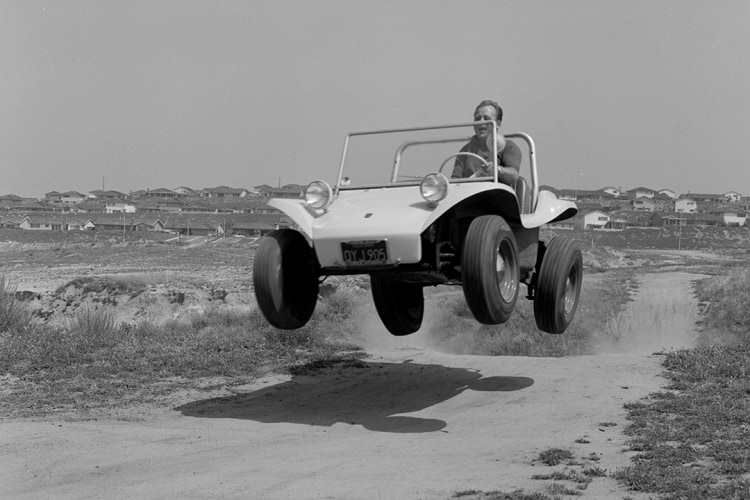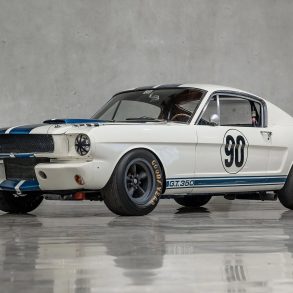Bruce Meyers passed away last week at the age of 94. He lived a fulfilling life most of us can only dream about. He was an inventor, a surfer, a war hero, an artist, and a race car driver. Meyers completely changed the landscape of the 1960s Southern California car culture when he created the Meyers Manx, an off-roading fiberglass buggy that was based on the Volkswagen Beetle.

Until the very end, Meyers was an energizing soul of car culture, celebrating life to the fullest with the freedom he experienced from off-roading.
Despite his company only producing around 7,000 of the original Meyers Manx vehicles, the fiberglass-body design became the go-to image when envisioning a ‘dune buggy’ driving on the sand to the surf.
In 2017, Meyers claimed:
My life has been full of adventures. I want people to have an adventure in life.
Meyers was born in Los Angeles, where he grew up around beaches and surfing. His father was also a well-known car dealer, so he was immersed in cars as he grew up.
During World War II the whole nation was called to fulfill their duty, with Meyers enlisting in the Merchant Marines and then the Navy.

In 1945, he was aboard the USS Bunker Hill, an aircraft carrier targeted by two kamikaze bombers. Almost 400 of the crew perished, with Myers one of the few who survived. He swam through the wreckage in search of his fellow shipmen to rescue.
Meyers returned home after the war, where he commenced art school. He would spend many hours on a surfboard and learnt the skill of making sailboats using a completely new material at the time: fiberglass.

During this time, he noticed numerous fellow Californians using Volkswagen Beetles with absent body panels to navigate the dunes where typical four-wheel-drive vehicles were having a hard time crossing.
1964 was the year that Meyers set out to develop a better way to get around in the sand. He started with the Beetle’s floorplan and running gear, and from there, he created a fiberglass tub on top, and chrome wrapped ‘bug-eye’ style headlamps.

Instead of just putting together various aspects of different cars, he inspired to create something that was fun and artistic with a touch of hotrod flair.
His creation, “Old Red,” had the look and design that would start a whole new culture of lightweight and affordable Beetle-based buggies.

It was a phenomenal success. Suddenly everybody wanted this happy little car. It’s a visualization of friendship and love.
After several years, Meyers and his friends elected to bring their buggy to Mexico where motorcyclists had been competing in long-distance races through the harsh desert terrain.
With only a few days to prepare, Meyers and his co-driver were victorious in the race that would become one of the most popular off-road races globally, the Baja 1000.

The Meyers Manx was immensely popular. His buggy building operation, now known as Meyers Manx produced 7,000 Manx units; however, many copycat variants swamped the market, forcing Meyers to wind up his operations.
Although there is no specific number, it is estimated that more than 250,000 Meyers-inspired buggies have been constructed worldwide.
In recent years, Meyers again started the production of a new buggy. It still had the Beetle chassis as the base but was a two-seater instead of four.
In 2014, the National Historic Vehicle Register added the original “Old Red” to represent a design that was loved by countless fans around the world.
I was just a character who lived a lifestyle of breaking traditions, and the dune buggy did that.
Bruce Myers
[Source: Volkswagen / Feature Image: Historic Vehicle Association ]











Kool Dude